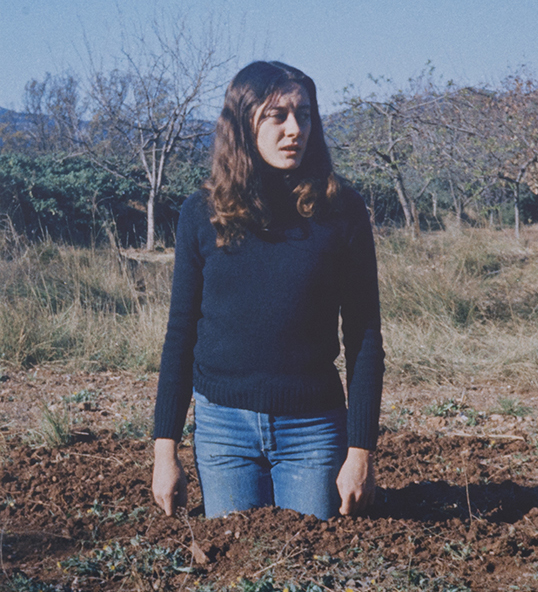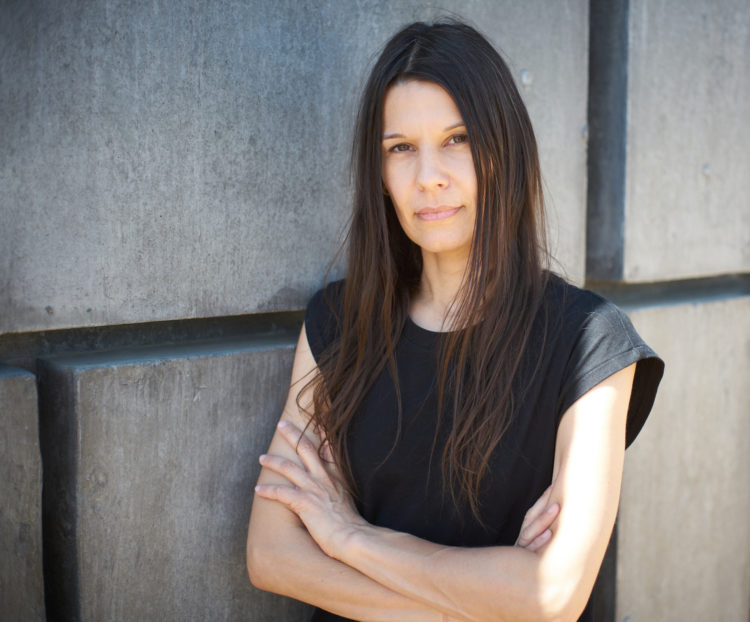Research
Women, artists and animals. During the 1970s artists like Bonnie Ora Sherk (Public Lunch, 1971) and Fina Miralles (Imatges del zoo [Zoo images, 1974]) had themselves caged next to other animals – tigers in the San Francisco zoo, and a dog, sheep, cat and frog in the Sala Vinçon in Barcelona. In this way they crossed the line to proclaim that they, too, were animals.1 Although these interventions were not billed as feminist or animalist at the time, they were very different than the arte povera pieces in which men like Jannis Kounellis and Pier Paolo Calzolari exhibited live animals (canaries, parrots, fish, doves and horses) as objects and artworks, highlighting the distinction between them and the human observer, a distance between animals and human viewers represented as insurmountable and exclusionary. During the following decades, many women artists have continued to explore our relationships with other animals, with their perceptions, feelings and perspectives, implicitly bringing up ecological issues. In recent years attention has often been focused on concrete contexts, particularly those situated in places where certain animals are ignored, avoided or taken for granted. One example is a series of pertinent projects by María Jerez and Silvia Zayas, concerning respectively birds and stingrays. Although their particular animal projects diverge, they share a common penchant for slower, long-term processes, and the capacity to listen attentively to the other voices, senses and worlds with which we cohabit.

Silvia Zayas, ê, 2021, still from the film, 44 min. © Courtesy Silvia Zayas
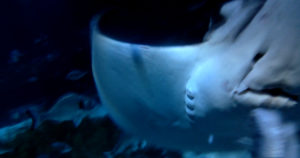
Silvia Zayas, ê, 2021, still from the film, 44 min. © Courtesy Silvia Zayas
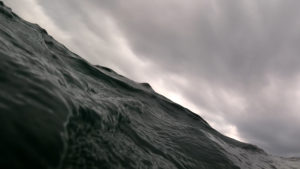
Silvia Zayas, ê, 2021, still from the film, 44 min. © Courtesy Silvia Zayas
Silvia Zayas’ piece was inspired in 2017 when a common stingray (Dasyatis pastinaca) swimming near the artist reacted by hiding in the sand when they realised they were being observed. This aroused Zaya’s interest in the perceptive abilities and underwater environment of elasmobranch fish (rays and sharks), chimera and their cartilaginous skeletons. In her exhibition, entitled ê, for several weeks the artist condensed a still ongoing process. ê is a visual representation of the nasal sound in her mother tongue, Portuguese, “which comes from when you hold your nose like when you’re equalising the pressure under water, but the sound is deeper”.2 This is a reference to the world of skindiving, a practice Zayas adopted to advance this project. Or perhaps it would be better to say that diving came first and conditioned the rest, motivated partly by a desire for slower temporalities and partly because of a family connection. There was also a certain attraction exercised by the vulnerability of the body in a liquid environment, the sensation of strangeness produced by floating in water, and the concern often felt for other divers and the environment.3
Along with the marine biologist Claudio Barría, the artist did a series of dives searching for populations of electric stingrays of the Torpedo torpedo species found in the waters off the Catalan coastline, alongside metal breakwaters, forests of concrete posts and sediment-muddied currents. For unknown reasons, despite the litter and the acoustic and other kinds of contamination, these stingrays, known for their powerful electric discharge, are able to withstand the conditions in these hybrid zones for which Zayas has developed an affection. She filmed these dives with a camera attached to her body so as to avoid the hand-eye axis, in experiments whose goal was to eschew acts like visually catching and holding, thus avoiding turning these rays into objects or targets by capturing them in the human gaze. These strategies, says Zayas, citing the filmmaker Trinh T. Minh-ha, seek to operate in indirect, poetic modes rather than fixing on something as an object of study. Her approach opts for remaining close rather than at a distance or acting as if the object of our discourse were not present.4
The film ê (44 min., 2021), the centrepiece of her exhibition at Matadero (Madrid), represents immersed fragments of these hybrid sites inhabited by beings that pass through the frame, such as fish, needlefish etc., with the counterpoint of the electrical emissions produced by the stingrays that hide – and are intuited – below the seabed. By renouncing the eye-hand axis, the camera transmits tactile sensations that oscillate between the movements of a body as it sways and swims, the rhythms and ebb and flow of the ocean currents, the loss of the ability to distinguish between up and down, and the flight of a seagull seen from the other side of the water’s surface. This suggests other worlds and sensations, like the ability of stingrays and other elasmobranchs to perceive magnetic fields, or the lateral line with which they sense the vibrations of water, and what it feels like to be buried in sand and gravel as these elements partially accumulate and disperse with the movements of the waves. For a few brief seconds the ray’s five ocelli – marks that resemble an eye, more noticeable than the small pair of eyes on the upper part of a stingray’s head – emerge or hide beneath the sand.
“Sand has eyes”,5 writes Zayas: we observe them and they observe us; we perceive them with our particular senses and they perceive us with their own. When asked about the possibility of inter-species communication, she denies that this is her intention, or even the appropriate terminology, although she does point out that indifference toward a being swimming alongside you or hiding in the sand is also a form of communication.6 Zayas’s next step, the film ruido ê, still in development, will study the effect of acoustic pollution on stingray populations by attentively listening to the network of relationships with events in their surroundings. The film will involve diving with rays and collaboration with biologists Claudio Barría and Michel André, along with the Catsharks conservation NGO and other citizen ocean observation groups. The project is conceived as a conversation between humans and non-humans in which attention is paid to the viewpoint of the latter, voices that don’t necessarily emit sounds but rather, perhaps, electrical impulses and other kinds of vibrations.

María Jerez, The Stain, 2019, performance © María Jerez
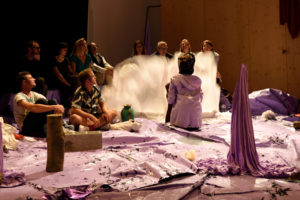
María Jerez, The Stain, 2019, performance © María Jerez
For her part, María Jerez’s situates in The Stain (2019) the beginning of a project on birdsong. She worked with a carpenter, a musician, a painter, a baker and a lighting designer to bring together usually separate things and bodies. But there were no other animals involved, and she felt that absence, seeking to include a form of collaboration with non-human elements. She noted that in urban environments, birds, unlike mammals, do not hide. They’re always there, letting themselves be seen and heard, even though “we live with them but pay them no mind”.7 This led her to think, in theatrical terms, of a fourth wall separating birds and humans, and how we can break down that wall. During the silence produced by the Covid pandemic, the tonal presence of birds became all the more obvious.
The resources Jerez has opted for include birdcalls, objects that when activated sound like specific bird species – or at least claim to do so, although they don’t entirely succeed. Birds pay attention to them and are intrigued by these sounds, but are not necessarily fooled. What interests Jerez is to take conversations and reflections into this space of possibilities and uncertainty. She suggests that birds know and say things we will never understand, that our own languages have flaws and limitations, and that there exist other languages, or things that are perhaps not languages at all but at least other voices.
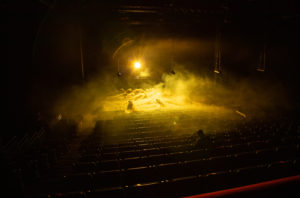
María Jerez & Edurne Rubio, A nublo, 2021, performance © photo by Mark Pozlep © María Jerez & Edurne Rubio
Rather than a tangible dialogue, Jerez opts for this openness, highlighting the idea of a chorus and a possible collaboration between people and birds which may, in fact, already exist. Based on the dawn birdsongs she shared with the Belgian scientist Nils Bouillard and the artist Edurne Rubio for the piece A nublo (2021), Jerez has taken up the idea pointed out by Bouillard that birds of the same species on the two sides of the French and Flemish-speaking borders have distinct dialects. Perhaps, she speculates, birds may already have become aware of our different sonorities and are able to sing them.
Responding to the question “How can we maintain contact with other species, other, nonhuman corporealities and perspectives existing in our cities today?”,8 Jerez has articulated several proposals guided by concepts such as divergent collaboration that make it possible to bring together different rhythms and attentions, relying on the promise that this communication is already happening even though language cannot express it, enabling an intimacy that is less intrusive than physical proximity. In Hay una superstición [There is a superstition, 2021], her starting point was to imagine what the project would sound like even before it existed – mutually responding bird sounds and human calls, whistles and hums.9 She then carried out listening activities and the use of birdcalls in artists’ studios, concerts for avian and human calls in collaboration with Élan d’Orphium or on her own, in venues associated with art centres, such as the courtyard of the Museo Nacional Centro de Arte Reina Sofía, Madrid, with just the odd blackbird or sparrow, dominated by a pair of restless magpies, or the Centro de documentación y estudios avanzados de arte contemporáneo (CENDEAC) at nightfall, with the calls mingling with traffic noise.9 One of her future projects will be a performance on a floor that sings like a nightingale (or a blackbird or a sparrow) as a response to various body movements. Jerez’s idea is to be materialised with the help of a luthier, and it turns out to be associated both to a Japanese tradition and to a book that serves as a reference for this luthier, Alejandro de Antonio (Across the Nightingale Floor, by Gillian Rubinstein). Once again, this is about exploring the back-and-forth between humans and birds, which will surely raise questions about ourselves, as pointed out in the book Que diraient les animaux si on leur posait les bonnes questions ?[What would animals say if we asked the right questions] by Vinciane Despret, which Jerez often cites.
María Jerez and Silvia Zayas. Stingrays that hide and which we barely know, birds that show themselves to us but which we tend to ignore. These different situations and contexts underline the need to foster new conversations. In the context of today’s ecological and climatic crisis, we urgently need to adopt ways of listening that can overcome the barriers separating us from other animals and nature, barriers that awaken empathies and hopes pointing to other possible futures beyond exclusively human voices and languages.
Concepción Cortés Zulueta, “Fina Miralles: De este lado de la línea – Mujeres y animales”, Yo somos otras. Prácticas de la subjetividad en la creación contemporánea; ed. Cortés Zaborras and Cortés Zulueta, Cuevas del Barrio (Granada: Editorial Universidad de Granada, 2021), pp. 377–400. Concepción Cortés Zulueta, “Fundamentos biológicos de la creación: animales en el arte y arte animal” (doctoral thesis, Universidad Autónoma de Madrid, 2016), pp. 179–203. http://hdl.handle.net/10486/672482
2
Silvia Zayas ê, exhibition statement, Matadero, Madrid (15 December 2021–30 January 2022), https://www.mataderomadrid.org/sites/default/files/media/document/2021/12/%C3%AA_SILVIA%20ZAYAS_PDC_web.pdf
3
Conversation between the author and the artist, 6 March 2023; Zayas, Silvia, “ruido ê (2021–2023)”, consulted 24 November 2023, https://silviazayas.wordpress.com/ruido-e/
4
Nancy N. Chen, “‘Speaking Nearby’: A Conversation with Trinh T. Minh–Ha”, Visual Anthropology Review 8.1 (1992): 82-91.
5
Silvia Zayas, ê, exhibition statement.
6
Conversation between the author and the artist, 6 March 2023; María Ptqk and Alberto de la Hoz, Azkuna Zentroa – Az Irratia, “Ciencia Fricción #5: ‘Volver al mar’”, consulted 22 February 2023, https://www.ivoox.com/ciencia-friccion-5-volver-al-mar-audios-mp3_rf_103515425_1.html
7
María Jerez, “Presentes Densos. Presentación de María Jerez. Taller ‘La escena de los pájaros’”, GVA IVAM, 8 May 2021, https://www.youtube.com/watch?v=1gKoBOMeIvs; Conversation between the author and María Jerez, 30 March 2023.
8
María Jerez, “Presentes Densos…”, ibid.
9
María Jerez, “Hay una superstición de María Jerez (2021)”, Felipa Manuela Residencias de Investigación Madrid, February 6, 2021, https://www.youtube.com/watch?v=dvBOMvNfKdY
10
María Jerez, “María Jerez | Todo en el aire”, CENDEAC, 9 November 2022, https://www.youtube.com/watch?v=Eo2fWeRHUF4
11
María Jerez, « María Jerez – Todo en el aire », CENDEAC, 9 novembre 2022, https://www.youtube.com/watch?v=Eo2fWeRHUF4.
Concepción Cortés Zulueta is a Juan de la Cierva Postdoctoral Fellow in the Art History department at the Universidad de Málaga (UMA) and part of its Instituto Universitario de Investigación de Género e Igualdad (IGIUMA). Her research concerns the presence and agency of non-human animals in contemporary visual (and aural) art and culture. Her recent work has focused on the sounds and senses of birds and insects, under the auspices of the Entomornitofilias project she leads at the UMA. She is part of the project Desnortadas: Territorios del género en la creación artística contemporánea [Disoriented: Gender territories in contemporary art].
An article produced as part of the TEAM international academic network: Teaching, E-learning, Agency and Mentoring.
Concepción Cortés Zulueta, "María Jerez & Silvia Zayas: Artists & Animals, Caring About Non-Human Voices." In Archives of Women Artists, Research and Exhibitions magazine, . URL : https://awarewomenartists.com/en/magazine/maria-jerez-et-silvia-zayas-artistes-et-animaux-preter-loreille-aux-voix-non-humaines/. Accessed 5 July 2025




